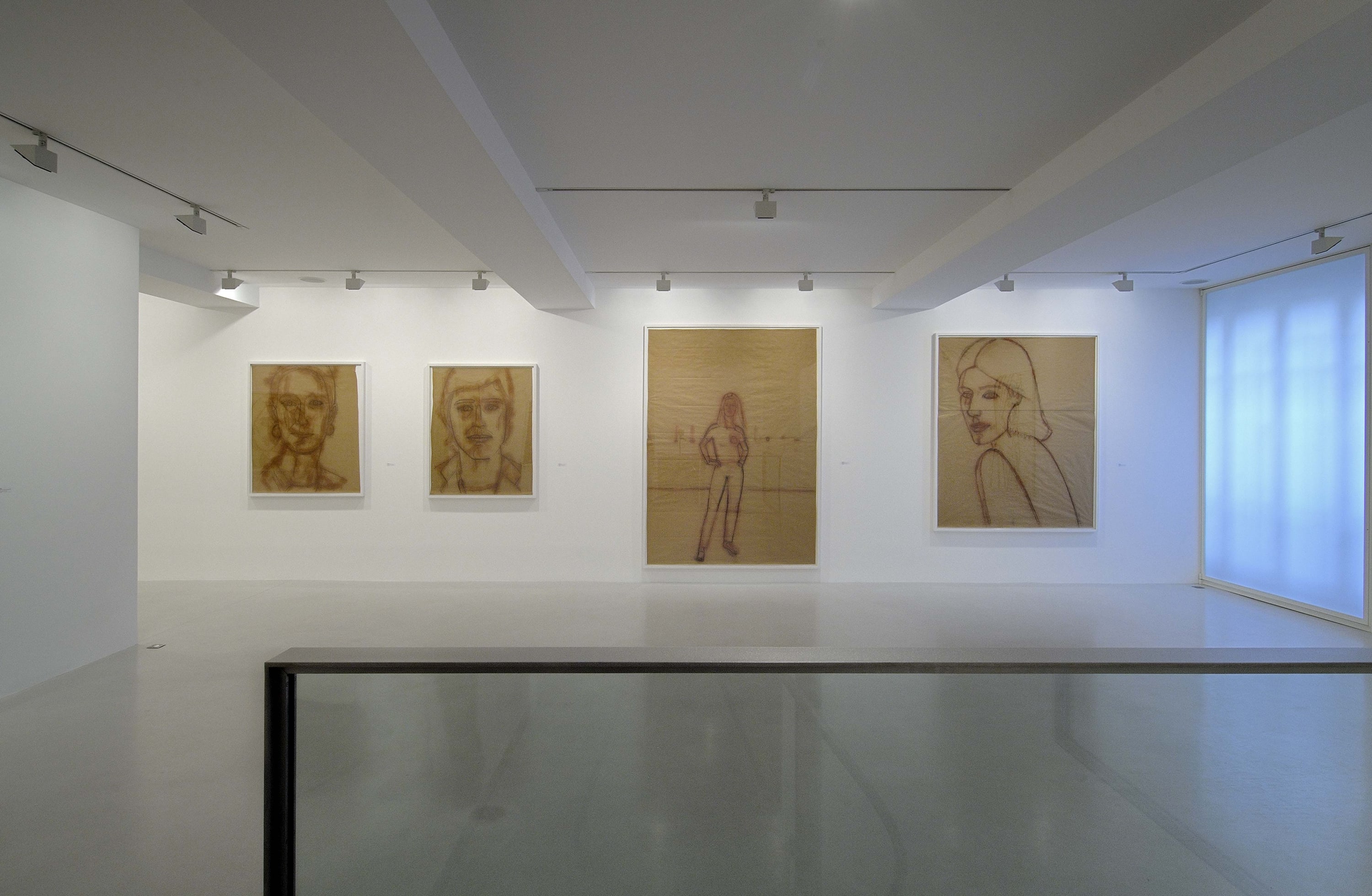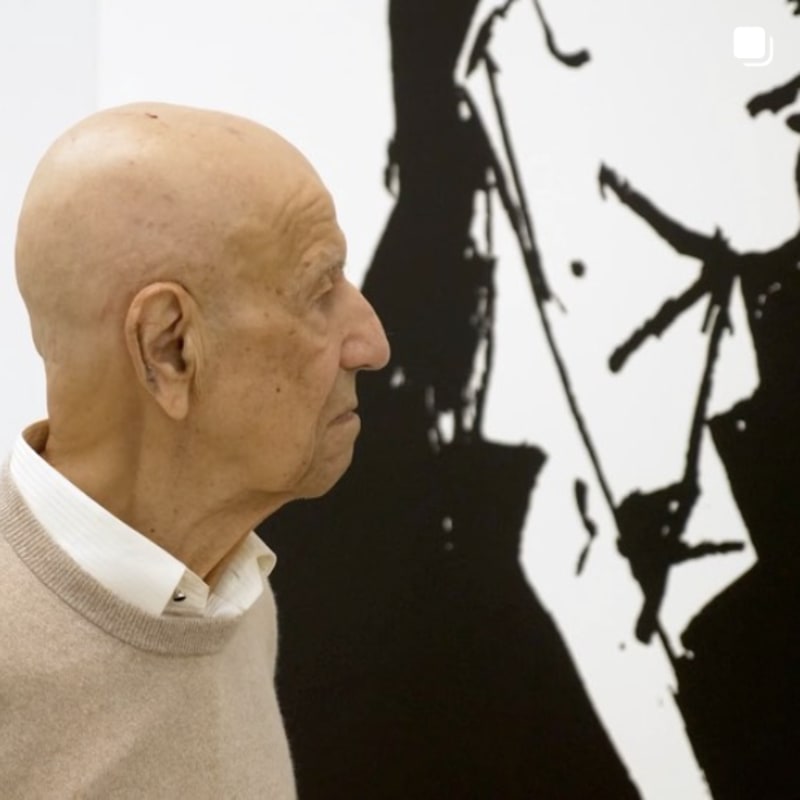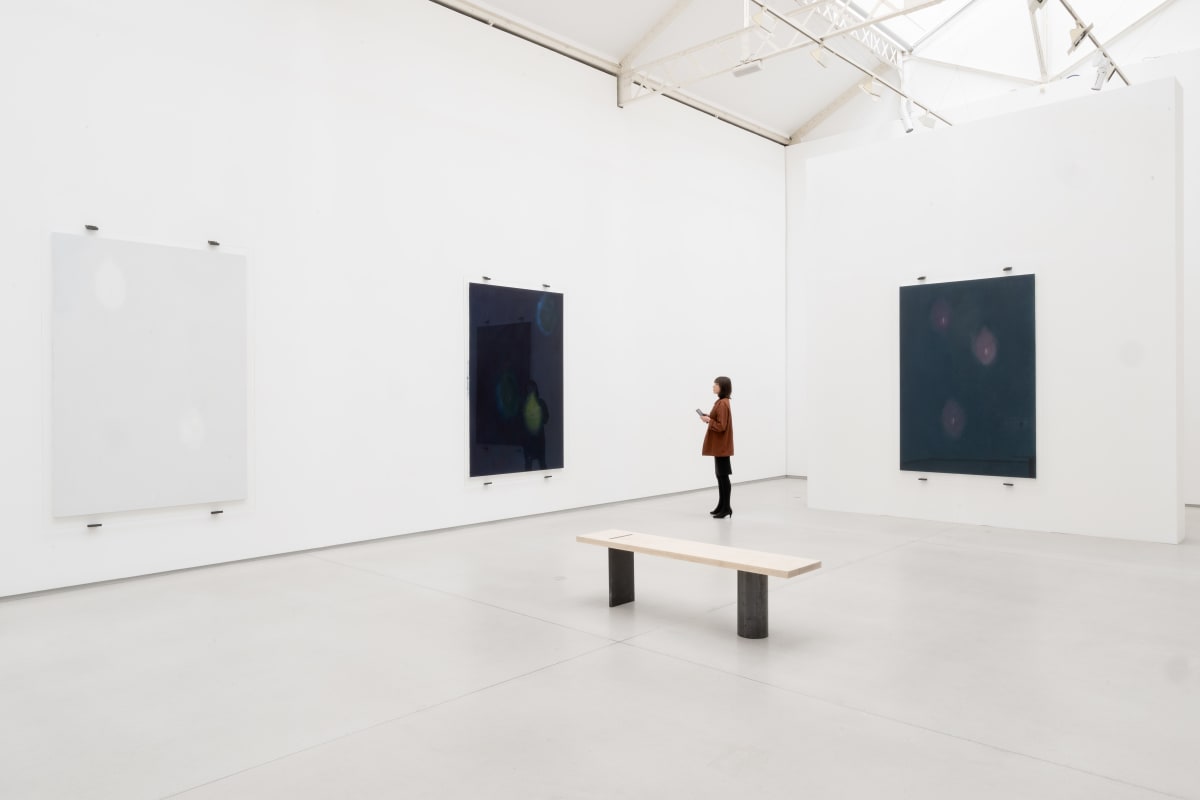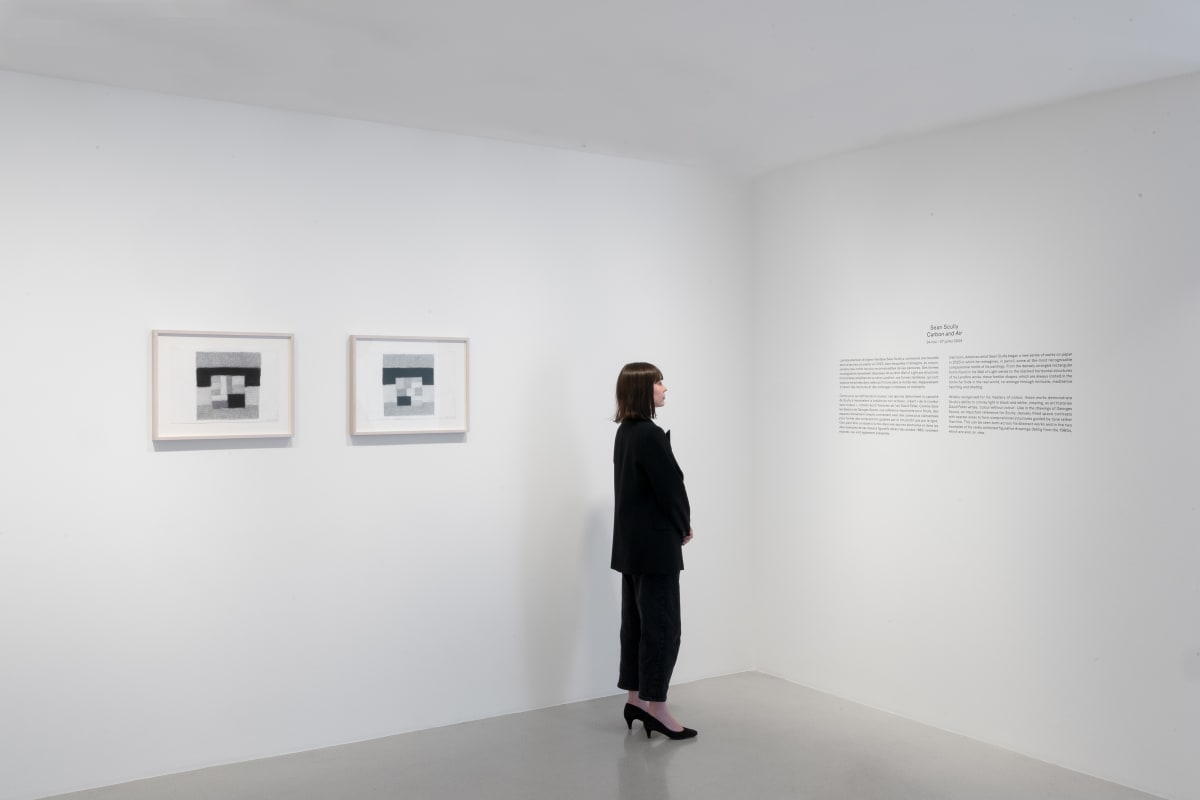

Overview
The cartoons are notable for their many overlapping and parallel-running outlines: corrections that have been abandoned in the search for the perfect form.
Galerie Thaddaeus Ropac is pleased to present in the Drawing Space an exhibition of works on paper by the American artist Alex Katz opening Wednesday, May 23rd. The show includes large-scale outline drawings, which function for the artist very practically and pragmatically as templates to transfer a full-size image onto the canvas prior to painting.
The cartoons are notable for their many overlapping and parallel-running outlines: corrections that have been abandoned in the search for the perfect form. They produce a strange painterly effect alongside the somewhat scattered red chalk or charcoal dust that was meant to transfer the final lines onto the canvas but which seems to have been blown away.
Like the oil sketches or pencil drawings, the cartoons serve more as a mental preparation and experimental realisation of the forms of the later painting, which in the end stems purely from the muse of inspiration, free and independent from all preparatory works and projections. Looked at from another perspective they appear to be a simple device to facilitate the creation process of a painting but actually they have their own aesthetic, intrinsic purpose and worth as a self-sufficient mode of expression. Properly appreciated for their real drawing virtues and the insights they allow into the painter's practice, they offer a very pertinent way into Katz's work. ' I don't think that there's a quality difference between a painting, a drawing, a graphic, or a stage set'.
To begin with the cartoons allow us to recognise the hyperconscious, sophisticated process of Katz's creativity. It is a process at once startlingly traditional and deeply personal. In many ways Katz's methods, as already suggested, are conventional and time-honoured.
Today the cartoons of Alex Katz are regarded as some of the most beautiful examples of contemporary drawings. Certainly they can have a strange and sticking beauty. A ghostly aura hovers over them, generated by a blurred halation around the image - the product of the artist having 'pounced' pigment through perforated lines onto the canvas. In the cartoons we can enjoy the natural charisma of a utilitarian product being suddenly recognized as possessing an unconscious grace and unpretentious elegance. They are not really templates or matrices, but self-promptings, provisional guidelines. And like his preparatory pencil drawings and oil studies they are analogue not digital, mimetic not indexical. Everything in Katz is freehand.
Occasionally he will use photo snapshots as aids to memory, but these too are always fully assimilated through drawing; there is never any tracing or projecting. Drawing for him is all about readjusting form, easing a composition together, establishing a right scale, acclimatising to the mood, the associations, the psychology, the visual pace and character of an image. He fees his way towards an empathetic (if sometimes uneasy) relation to subject, and an organic (if sometime edgy) resolution and coherence within the art object.
Kat is deeply improvisatory; his Renaissance paraphernalia of preparatory studies and cartons eliminate nothing of the Modernist imperative for full engagement in every moment of production. If anything, that engagement is all the more charged in Katz for being understated, concealed by artifice, negotiated against the demands of representation.
Katz has consistently, and through a career of complex artistic development, held his difficult ground between the modern and Post-Modern. Katz's alternative, dialectical position, incorporating the balancing of a whole range of oppositions - extemporisation vs. prescription, surface vs. depth, precision vs. approximation, candidness vs. inscrutability - has freehand drawing at its centre, combining both openness and discipline.
Alex Katz was born in New York in 1927. He became a renowned figure in contemporary painting during the 1960's. He first emerged on the New York art scene during the heyday of Abstract Expressionism and before the birth of Pop Art, but always worked independently of these movements. Katz is best known for his portraits of sophisticated, irresistible women, bold, transcendent landscape paintings and his portraits of friends and family often painted in Maine. A number of larger-than-life paintings like The Back Dress (1960), Blue Umbrella (1972) and White Visor (2003) have entered into the collective consciousness. Alex Katz has exhibited widely all over the world and his works are featured in the collections of many major museums such as the Museum of Modern Art, New York; Tate, London; Centre Pompidou in Paris and the National gallery in Berlin.












































































































































































